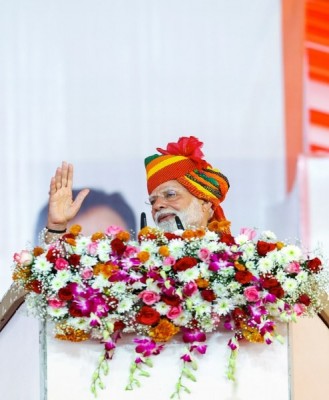
ISRO successfully flight tests indigenous space shuttle RLV-TD
The HS9 solid rocket booster carrying RLV-TD lifted off from the First Launch Pad at Satish Dhawan Space Centre, Sriharikota at 7am.
According to an ISRO announcement, after a successful flight of 91.1 seconds, HS9 burn out occurred, and both HS9 and RLV-TD, mounted on its top, coasted to a height of about 56 km.
The RLV-TD was 6.5 meter long and weighed around 1.75 tons.
At that height, RLV-TD separated from the HS9 booster and further ascended to a height of about 65km, its peak altitude and then began its descent followed by atmospheric re-entry at around Mach 5 (five times the speed of sound), ISRO announced.
The vehicle’s Navigation, Guidance and Control system accurately steered the vehicle during this phase for safe descent.
After successfully surviving high temperatures of re-entry with the help of its Thermal Protection System (TPS), RLV-TD glided down to the defined landing spot over Bay of Bengal, at a distance of about 450km from Sriharikota, thereby fulfilling its mission objectives, ISRO reported.
The vehicle was successfully tracked during its flight from ground stations at Sriharikota and a shipborne terminal.
Total flight duration from launch to landing of this mission of the delta winged RLV-TD, lasted for about 770seconds.
In this flight, critical technologies such as autonomous navigation, guidance & control, reusable thermal protection system and re-entry mission management have been successfully validated.
ISRO acknowledged the support of Indian coast guard and National Institute of Ocean technology (NIOT) for the mid-sea wind measurement and shipborne telemetry, respectively.
Support Our Journalism
We cannot do without you.. your contribution supports unbiased journalism
IBNS is not driven by any ism- not wokeism, not racism, not skewed secularism, not hyper right-wing or left liberal ideals, nor by any hardline religious beliefs or hyper nationalism. We want to serve you good old objective news, as they are. We do not judge or preach. We let people decide for themselves. We only try to present factual and well-sourced news.







